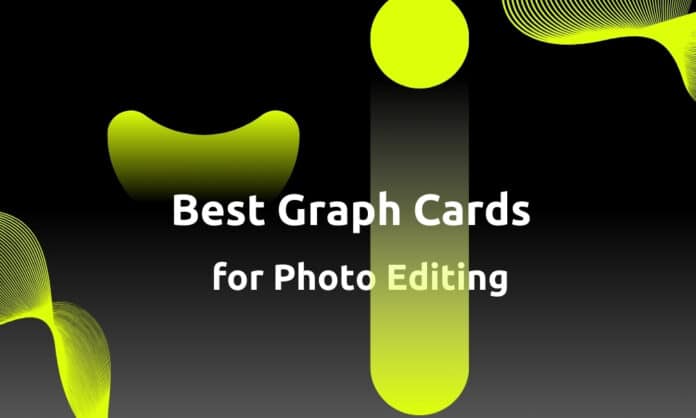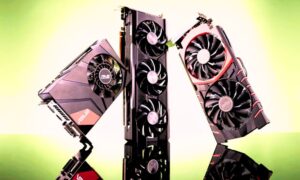When it comes to Best Graphics Card for Photo Editing, the right graphics card plays a crucial role in enhancing your editing performance, boosting productivity, and ensuring accurate color rendering. While the CPU handles most basic editing tasks, a GPU (Graphics Processing Unit) accelerates specific tasks like rendering, applying filters, and real-time previewing, which can be slow and cumbersome with just the CPU.
The Role of a Best Graphics Card for Photo Editing
- Faster Processing: A powerful GPU speeds up image rendering, making the photo editing process faster and more efficient.
- Real-Time Previews: A good GPU ensures smooth real-time previews without lag, helping you see the final output instantly.
- Color Accuracy: GPUs with high-quality color support provide more precise color representation, which is essential for photo editing.
Now that you understand the importance of a graphics card, let’s dive into the best graphics card for photo editing across different needs and budgets.
Best Graphics Cards for Photo Editing: Top Recommendations
1. Nvidia GeForce RTX 3070
The Nvidia GeForce RTX 3070 stands out as a powerful and efficient option for photo editing. It delivers excellent performance, even in demanding tasks, and balances power and affordability.
Why Choose Nvidia GeForce RTX 3070 for Photo Editing?
- VRAM: 8GB of GDDR6 memory, ideal for handling large files and multitasking.
- CUDA Cores: Over 5,888 CUDA cores that accelerate various editing workflows.
- Ray Tracing: Not necessary for photo editing, but useful for advanced 3D rendering if you work with 3D elements.
This GPU offers fantastic performance for photographers who need power without breaking the bank.
2. AMD Radeon RX 6800 XT
For those who prefer AMD over Nvidia, the Radeon RX 6800 XT is a fantastic option for photo editing. It offers excellent performance at a competitive price.
Why Choose AMD Radeon RX 6800 XT for Photo Editing?
- VRAM: 16GB of GDDR6 memory, making it ideal for working with large files and multitasking.
- OpenCL Support: Optimized for apps like Photoshop that utilize OpenCL for better performance.
- Energy Efficiency: Offers great performance with less power consumption compared to other high-end GPUs.
This card provides excellent value for both professionals and budget-conscious users.
3. Nvidia RTX 3080
The Nvidia RTX 3080 is designed for users who want top-tier performance and future-proofing for their photo editing setup. It is particularly ideal for professionals who work with large, complex files or 3D renderings.
Why Choose Nvidia RTX 3080 for Photo Editing?
- VRAM: 10GB of GDDR6X memory, perfect for high-resolution and 4K editing.
- Superior Performance: 8,704 CUDA cores provide fast processing speeds, improving rendering and multitasking.
- Ray Tracing: While not needed for photo editing, ray tracing can assist with complex 3D visual effects.
The RTX 3080 offers unbeatable performance, making it the best choice for professional photo editors.
4. Nvidia GTX 1660 Super
If you’re just starting out or need an affordable GPU for basic photo editing, the Nvidia GTX 1660 Super is a fantastic budget option. It offers solid performance for users editing smaller files and performing basic tasks.
Why Choose Nvidia GTX 1660 Super for Photo Editing?
- VRAM: 6GB of GDDR5 memory is sufficient for most standard photo editing tasks.
- Performance: Handles light tasks like cropping, retouching, and basic color correction.
- Price: An affordable option that delivers excellent value for beginners.
This GPU is perfect if you’re just getting started and need an economical solution for lighter editing tasks.
5. AMD Radeon RX 5700 XT
The AMD Radeon RX 5700 XT offers a great balance between price and performance, delivering solid results in photo editing while providing more headroom for higher-end tasks.
Why Choose AMD Radeon RX 5700 XT for Photo Editing?
- VRAM: 8GB GDDR6 memory that allows for efficient handling of large images and multitasking.
- Performance: Excellent for 4K photo editing, making it a good choice for professionals.
- Software Support: Ideal for apps like Photoshop, which support OpenCL acceleration.
The RX 5700 XT delivers a great performance-to-price ratio, making it a competitive option for photo editing.
Factors to Consider When Choosing the Best Graphics Card for Photo Editing
When selecting the best GPU for photo editing, it’s crucial to take several factors into account to ensure compatibility with your editing needs and workflow.
1. VRAM (Video Memory)
VRAM is one of the most important aspects of a GPU for photo editing. The more VRAM your GPU has, the better it can handle large files, multiple layers, and demanding editing tasks.
- 6GB: Sufficient for basic tasks like retouching and color grading.
- 8GB: Ideal for high-resolution files and multitasking.
- 16GB: Best for heavy multitasking, high-resolution images, and video editing.
2. GPU Architecture
The architecture of your GPU impacts performance. Modern GPUs such as Nvidia’s Ampere and AMD’s RDNA 2 offer better power efficiency and high performance for graphics-heavy tasks.
- Nvidia Ampere: Found in the RTX 3000 series, ideal for creative workflows.
- AMD RDNA 2: Featured in the Radeon RX 6000 series, efficient and high-performance for editing.
3. Software Compatibility
Ensure the GPU you choose is compatible with your photo editing software. Nvidia cards are optimized for CUDA cores, which are preferred by Adobe software like Photoshop and Lightroom, while AMD cards excel with OpenCL.
- Nvidia: Best for software that supports CUDA, including Photoshop and Lightroom.
- AMD: Optimized for OpenCL, a great option for editing and video editing tasks.
4. Power Consumption
High-end GPUs such as the RTX 3080 require more power. If you’re working with a smaller or compact build, consider the power requirements of the GPU to ensure your system can support it.
- Low Power: GTX 1660 Super and RX 5700 XT are energy-efficient.
- High Power: RTX 3080 requires a more powerful power supply for optimal performance.
5. Price and Budget
Determine your budget based on your needs:
- Entry-Level: GTX 1660 Super or RX 5700 XT for beginners.
- Mid-Range: RTX 3070 or RX 6800 XT for a balance of performance and cost.
- High-End: RTX 3080 or RTX 3090 for professional photo editing tasks.
Check out: Top 10 Best Gaming Laptops 2021: Top Laptops to Buy
Choosing the best graphics card for photo editing depends on your specific needs, budget, and editing tasks. High-end GPUs like the Nvidia RTX 3080 deliver exceptional performance for professionals, while more affordable options like the GTX 1660 Super are perfect for beginners and hobbyists.
By considering factors such as VRAM, GPU architecture, software compatibility, and power consumption, you can find the right GPU to improve your photo editing workflow, reduce rendering times, and ensure high-quality results.
User Experience Based Frequently Asked Questions
1. Why Does a Graphics Card Matter for Photo Editing?
A graphics card accelerates rendering, color correction, and applying filters in photo editing software, improving overall workflow efficiency and performance. It reduces the workload on your CPU, allowing for smoother edits.
2. What is the Minimum VRAM Required for Photo Editing?
For most photo editing tasks, 6GB of VRAM is sufficient, but 8GB or more is recommended for handling large files and multitasking with multiple applications.
3. Should I Choose Nvidia or AMD for Photo Editing?
Both Nvidia and AMD have excellent GPUs for photo editing. Nvidia is ideal for applications that use CUDA cores, like Photoshop, while AMD works well with OpenCL-optimized applications.
4. Can a Budget GPU Handle Photo Editing Tasks?
Yes, budget GPUs like the GTX 1660 Super are excellent for basic editing tasks such as retouching, cropping, and applying filters. However, more powerful GPUs are needed for large files or complex workflows.
5. How Does VRAM Affect Performance in Photo Editing?
Higher VRAM helps store large images, textures, and layers, allowing for smoother performance during heavy editing tasks, especially with high-resolution or RAW files.


